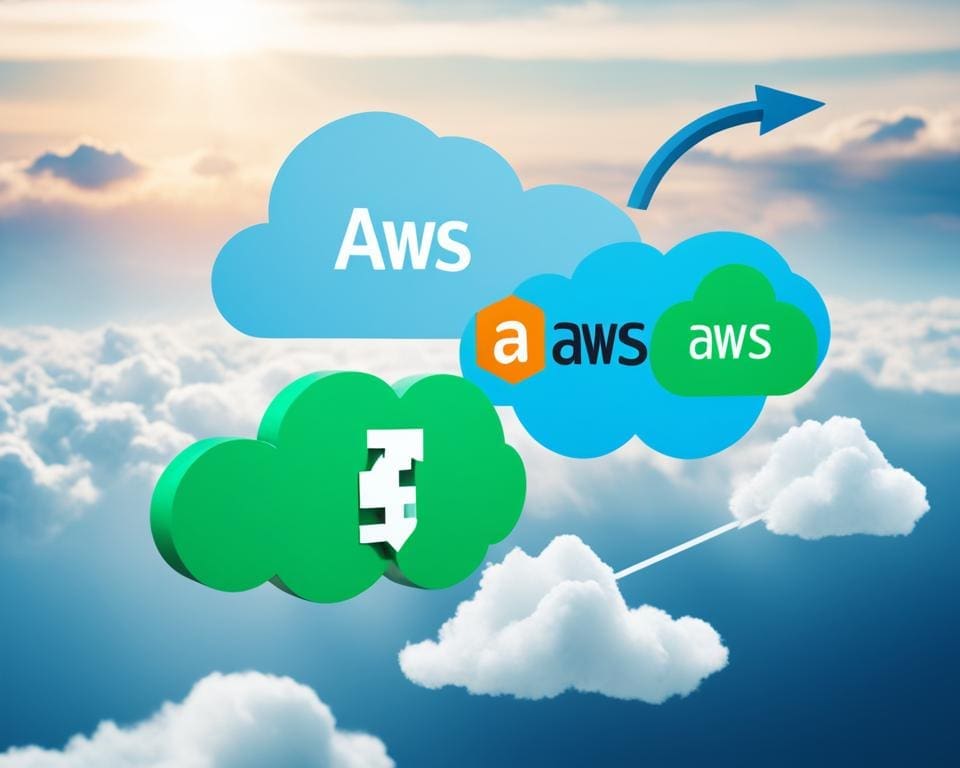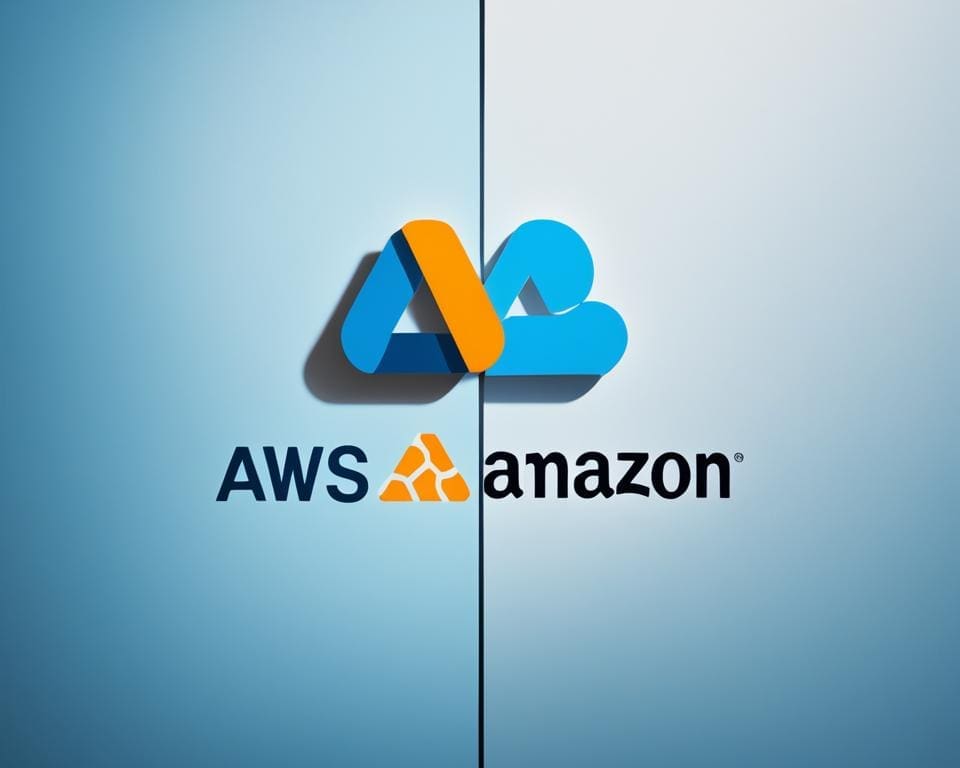Choosing the right cloud service is key for businesses to improve and innovate. This part looks at Amazon Web Services (AWS) and Microsoft Azure closely. Both are top choices in the cloud market because of their wide services and global reach.
Many companies use both AWS and Azure to get the best of each. This mix-and-match approach boosts flexibility, choice, and safety. The AWS Marketplace and Azure Marketplace make it easy to find and use third-party apps.
In cutting-edge tech like AI, AWS offers SageMaker, and Azure has Machine Learning. Both platforms provide powerful tools for using machine learning models.
Next, we’ll look more closely at features, security, user-friendliness, and prices of AWS and Azure. This will help you see which fits your needs better. Let’s dive into this AWS vs Azure comparison to learn what each offers.
Overview of Cloud Computing Services
Cloud computing changes how companies use technology, offering them more flexibility and scalability. Businesses use cloud computing services to get to resources, make processes easier, and bring in new ideas. It’s key to know the basics of this tech and get to know the top Cloud Service Providers. This way, companies can make smart choices on how to use it.
What is Cloud Computing?
Cloud computing means using the internet to deliver different services like storing data, servers, databases, and software. This model lets companies skip the cost of physical infrastructure. They can access high-tech options without paying a lot upfront. The main benefits are:
- Cost Efficiency: Firms only pay for what they need, which helps manage money better.
- Scalability: Companies can adjust services based on their current needs, which adds lots of flexibility.
- Accessibility: People can use these services from anywhere with an internet link, which supports working remotely.
Introduction to Major Cloud Service Providers
Several big Cloud Service Providers stand out, each with unique features to meet different business needs. Here’s a quick look:
- Amazon Web Services (AWS): Leading the market with over 32% share, AWS brings in about $25 billion. It offers a wide range of services, including analytics and computing.
- Microsoft Azure: Known for excellent AI tools and hybrid cloud options, Azure holds about 23% of the market. It also has data centres in more regions than others.
- Google Cloud Platform (GCP): While it has 9% of the market, GCP focuses on high-performing infrastructure. It also provides custom options for businesses.

Amazon Web Services vs. Azure: Cloud Comparison
In the world of cloud computing, Amazon Web Services (AWS) and Microsoft Azure lead the charge. They both offer key features, strict security, and great user experience. This sparks a debate on AWS vs Azure Pros and Cons. Each serves different needs, affecting choices for businesses and developers.
Core Features and Capabilities
AWS boasts over 200 services for managing web applications, from storage solutions to machine learning tools. Its EC2 instances come in types like General Purpose and Compute Optimized. This variety helps users find the perfect match for their workloads. Azure counters with its Virtual Machines. They are sorted into types such as General Purpose and GPU. This is ideal for applications needing lots of resources.
Security and Compliance
Both platforms take security seriously. AWS uses a shared security model. This ensures wide scalability without sacrificing safety. Azure matches this with strict compliance to regulations and Microsoft’s security tools. They both update their security to meet modern cloud users’ needs.
Ease of Use and Documentation
How easy a service is to use can make or break it in the AWS vs Azure debate. AWS provides detailed documentation, complete with guides and tutorials. Meanwhile, Azure’s documentation syncs well with Microsoft’s ecosystem. This eases the transition for those familiar with Microsoft. Both aim to simplify starting up, letting users focus more on creating than on managing.
Pricing Models and Cost-Effectiveness
When looking at AWS and Azure prices, it’s key to think about what you really need. Azure’s On-Demand VMs are generally cheaper than Amazon EC2, especially for 4 CPUs and 16 GB memory setups. This price advantage is there for both Linux and Windows, making Azure a good choice for many.
Choosing 3-year reserved instances makes a big difference in cost. AWS offers up to 62% off, while Azure gives a 58% discount. For 1-year reserved instances, AWS has a 42% discount and Azure offers 36%. It’s important to look at how you use cloud services to save the most.
Storage costs also need a look. Azure often has lower per-GB prices for Frequent Access storage than AWS. However, AWS matches Azure on Infrequent Access prices. AWS’s Elastic Block Storage might appeal to some, but Azure’s flexible payment options can help with budgeting. Knowing these pricing models well can help your business make the most of cloud tech at a better cost.









